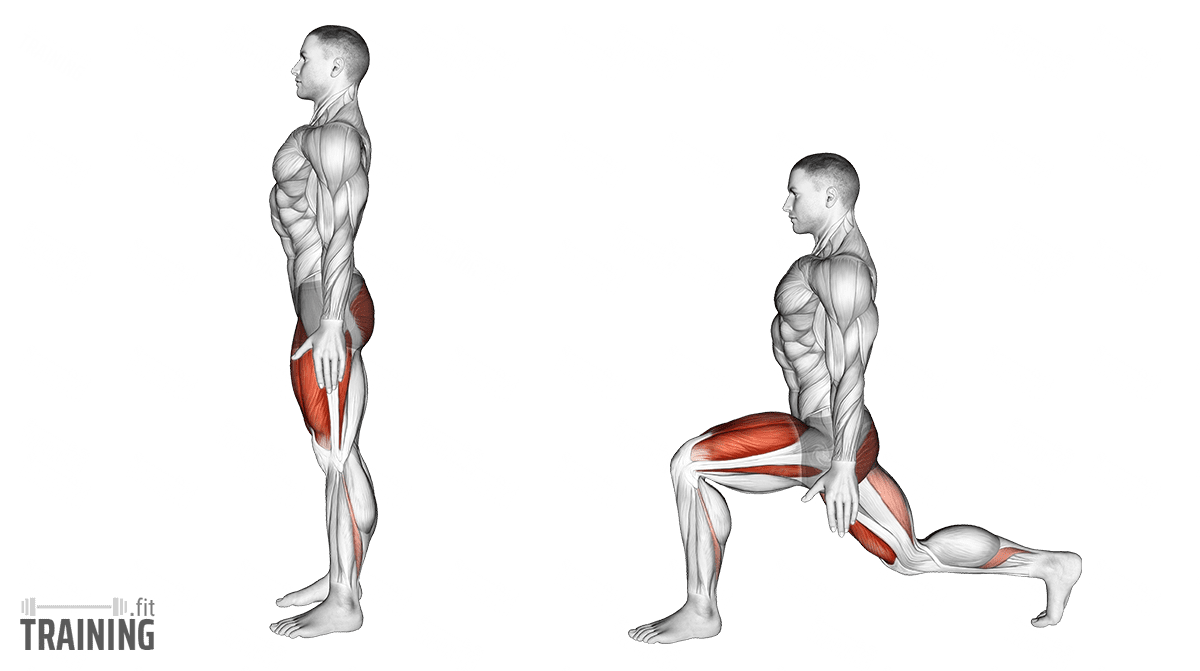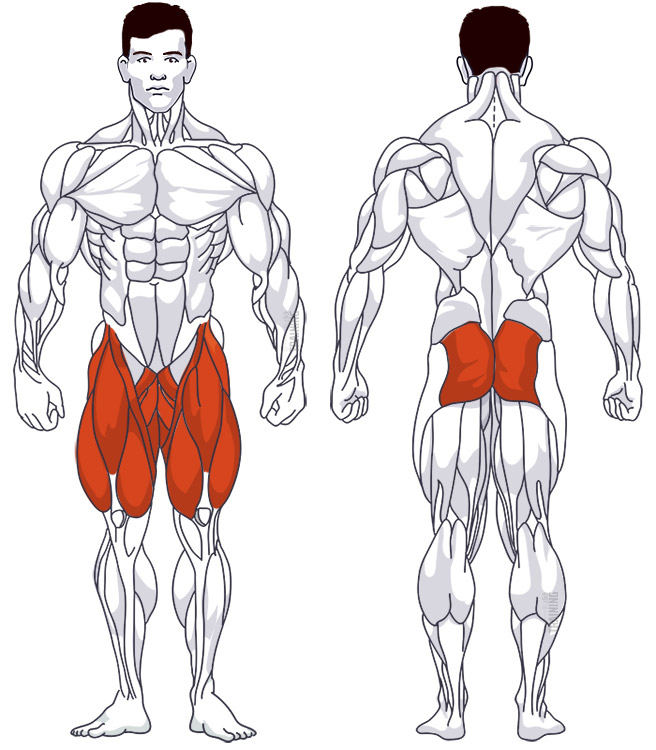Lunges
Isolation exercise, Body weightOverview

Main muscles
- Thigh: Quadriceps
(Musculus quadriceps femoris) - Buttocks: Large gluteus maximus
(Musculus gluteus maximus)
Training plans
Lunges is a suitable substitute for similar exercises in Thigh training or as a supplement to various training plans.
Lunges: Basics and alternatives

Involved main muscle groups:
Lunges
Lunges are a classic leg and butt workout, perfect for working out at home without equipment. They make a great alternative and complement to step-ups. As the name suggests, you take a big, controlled step forward during this exercise.
Even beginners can enjoy a good muscle workout with lunges, and they help improve balance too. To increase the intensity, you can also add barbell or dumbbell lunges to your routine.
Lunges mainly target the front thigh (quadriceps) and large gluteal muscle. With side lunges, you can also work on the inner part of the thigh (thigh adductors).
Correct execution
All you need to perform lunges is a little space to take your step. The wider your lunge, the more you’ll work your butt, while a shorter lunge will focus more on your thigh.
We’ll describe the stationary lunge below, which is more beginner-friendly. Both legs remain on the floor in a fixed position. Alternatively, you can do the lunge as an actual step, which involves changing the position of your training leg (see below).
Video tutorial
Step-by-step instructions
Stand up straight and take a big step forward with your training leg.
Keep both feet pointing forward. For better balance, place your hands on your hips.
Plant your front foot (training leg) firmly on the ground, and stand on your toes with your back foot, keeping your heel in the air.
Lower your upper body straight down. Your front leg supports your weight, while your back leg stabilizes your body. Make sure your front knee stays behind your toes. If it doesn’t, increase your step a bit. At the end of the downward movement, the angle between your upper and lower leg on the training leg should be about 90 degrees.
Push your upper body back up with your training leg, keeping your upper body upright and your abdominal muscles engaged throughout the movement.
Once you’re done with the first leg, switch to the second leg and perform the same number of reps.
Alternative execution
In the alternative version of the lunge, which is more common, you don’t remain stationary. Instead, lower your upper body immediately after lunging. Push your torso back up “explosively” to return to the starting position. At the end of the movement, you should be standing upright again.
If you’d like, you can alternate legs directly – switching between right and left with each rep. Or, do several reps with one leg first and then switch to the other. It’s important to do the same number of reps with both legs to avoid uneven muscle development.
Common mistakes
If your lunge is too small, you might create a narrow angle between your upper and lower legs. This can cause your knee to push in front of your toes as you lower, which not only reduces the training effect, but is also bad for your knee joint. Make sure your step is big enough, but not so big that you compromise your stability.